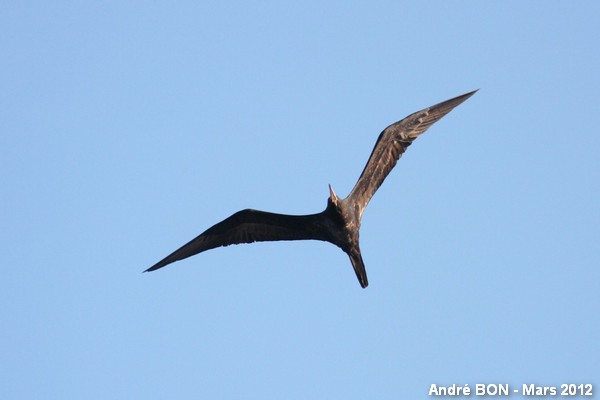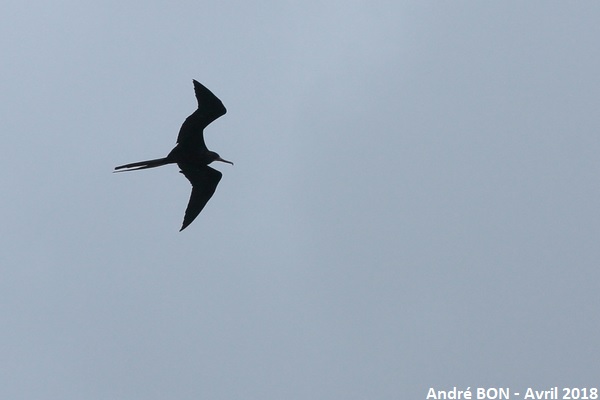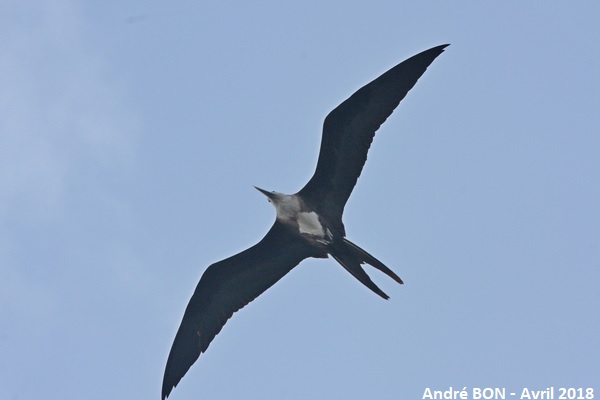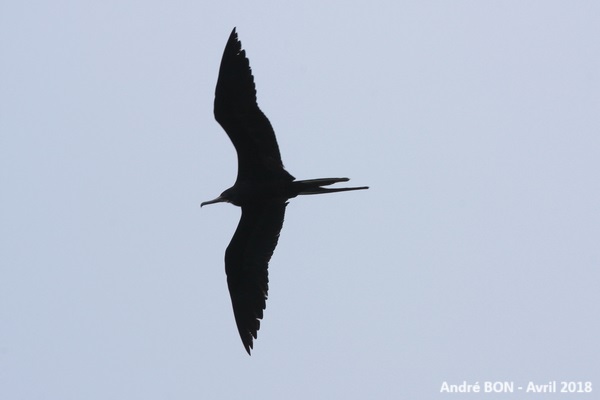




| Magnificent Frigatebird (Fregata magnificens (Mathews, 1914)) |





|
|
Scientific name: Fregata magnificens (Mathews, 1914) Common name: Magnificent Frigatebird French name: Frégate superbe Order: Suliformes Family: Fregatidae Size: Body size: 95 to 114 cm; Weight: 1200 to 1600 g; Wingspan: 210 to 245 cm. Habitat: Tropical marine areas. Food: The Magnificent Frigatebird feeds on fishes and turtles caught while flying near water because it cannot dive nor swim with its non-waterproof plumage. It also feeds on fish parts discarded by fishing boats and may harass other birds so that they release their food. Nesting: The Magnificent Frigatebird nests in colonies. The nests are simple platforms made of twigs, on the ground or in trees. There is only one egg per clutch. Males can take part in reproduction every year as they only take care of the young during a short period. Females mate and lay eggs only every other year as they take care of the young during a longer period. Migration: There is no migration but birds disperse after the nesting period. Geographic area: Atlantic coasts from Florida south to Brazil, also in the Caribbean and in the Cape Verde Islands. Pacific coasts from Mexico south to Ecuador, and also in the Galapagos Islands. |
The Magnificent Frigatebird is a large black bird with thin and angulous wings and a forked tail. Females and juveniles have white head and chest. The bill is long and hooked. Males show a red gular pouch that they inflate in a very spectacular way during nuptial displays. The Magnificent Frigatebird is active during the day but it sometimes spend the night in flight. It is able to fly during one week without landing. |
| [To know more about the Magnificent Frigatebird] [Next picture] [Top] |

|
This Magnificent Frigatebird just passed above me while I was looking at wader birds and Scarlet Ibis at the old harbour of Cayenne. The black head and underparts indicate one male. |
| [To know more about the Magnificent Frigatebird] [Next picture] [Previous picture] [Top] |

|
The silhouette of the Magnificent Frigatebird is very characteristic and the identification of the species is facilitated even when the observation conditions are not very good. |
| [To know more about the Magnificent Frigatebird] [Next picture] [Previous picture] [Top] |

|
These two Magnificent Frigatebirds are fighting over a piece of food. The white markings indicate females or juveniles. |
| [To know more about the Magnificent Frigatebird] [Next picture] [Previous picture] [Top] |

|
This Magnificent Frigatebird passed in flight just above me. The framing is not perfect, I cut the tip of a wing :-( |
| [To know more about the Magnificent Frigatebird] [Previous picture] [Top] |

|
Once again, the silhouette is enough for species identification. |